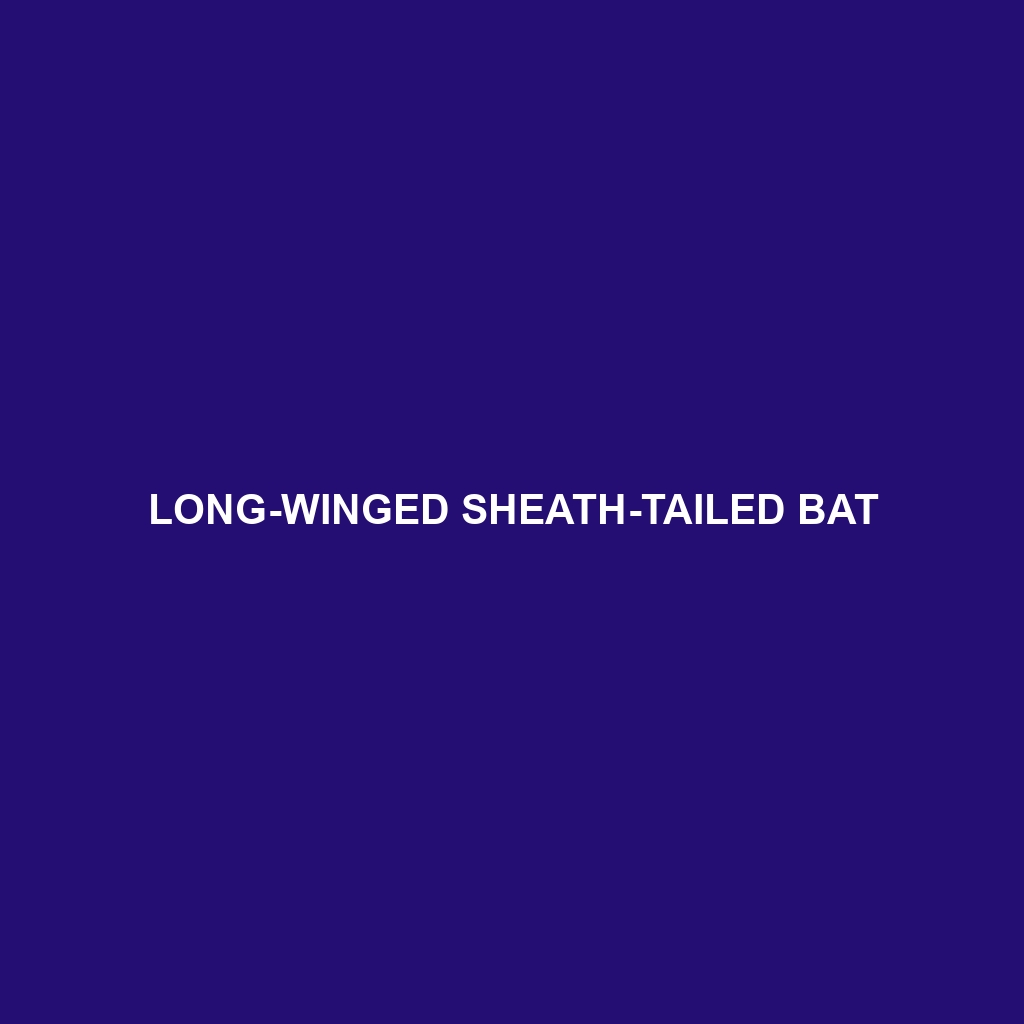Long-winged Sheath-tailed Bat
Common Name: Long-winged Sheath-tailed Bat
Scientific Name: Emballonura semicaudata
Habitat
The Long-winged Sheath-tailed Bat is primarily found in tropical regions of Southeast Asia and the Pacific islands. Its habitat includes limestone caves, anthropogenic structures, and forests, where it roosts in high humidity environments that offer protection from predators and temperature fluctuations.
Physical Characteristics
This medium-sized bat typically measures between 7 to 9 inches in wingspan. Its fur is generally dark brown to gray, with distinctive long-wings that give it the name. Notable features include a pointed snout, large ears, and unique sheath-like structures on its tail, which help in maneuverability during flight.
Behavior
The Long-winged Sheath-tailed Bat is known for its agile flight patterns, often hunting at dusk. It exhibits echolocation capabilities, using sound to navigate and locate prey. This species is highly social, frequently seen roosting in groups and engaging in mutual grooming.
Diet
The diet of the Long-winged Sheath-tailed Bat primarily consists of insects, particularly moths and beetles. It has been observed using a foraging strategy that combines hawking and gleaning, allowing it to effectively capture prey both in flight and from surfaces.
Reproduction
Breeding typically occurs during the wet season, when insects are abundant. Female Long-winged Sheath-tailed Bats give birth to one pup per season, which they nurture in communal roosts until they are capable of flying independently.
Conservation Status
The Long-winged Sheath-tailed Bat is currently listed as vulnerable by the IUCN due to habitat loss and degradation. Conservation efforts are critical in protecting their roosting sites and maintaining the ecological balance that supports their feeding habits.
Interesting Facts
Interestingly, the Long-winged Sheath-tailed Bat is known for its unusual tail structure, which is adapted for aerial navigation. It is also one of the few bat species that exhibit such pronounced social behavior, making them fascinating subjects for researchers.
Role in Ecosystem
The Long-winged Sheath-tailed Bat plays a vital role in its ecosystem as a natural pest control agent, helping to regulate insect populations. Its presence indicates a healthy environment, as bats contribute to pollination and seed dispersal, thereby supporting plant diversity and ecosystem resilience.
